4 next-gen CNS drug development trends
By Brian Buntz · October 24, 2022 · Drug Discovery & Development
The past couple of years have had a significant impact on CNS drug development, but it remains difficult to gauge how the field will evolve in the coming years. Many Big Pharma companies have AI initiatives, but most remain at a nascent stage.
The pandemic has exacerbated the mental health crisis, leading to a surge in interest in potentially new treatment options for the central nervous system, including psychedelic-inspired molecules. But Big Pharma companies continue to largely sit on the sidelines and let others derisk a class of drugs that have been illegal for decades.
The following article examines a range of topics pertinent to CNS drug development. We touch on the current state of AI adoption and discuss the potential of non-hallucinogenic psychedelic drugs and the future role of connected sensors in CNS clinical trials.

1. Big Pharma will continue to rely on AI partnerships — for now

In drug discovery and development, “AI” remains a buzzword — including in the domain of CNS drug development.
“There’s a lot of interest,” said Daniela Brunner, PsychoGenics’ chief innovation officer. “There’s a lot of doubt as well.”
Earlier this year, GlobalData surmised that AI and Big Data would be the “most disruptive emerging technology duo in the pharmaceutical sector in 2022.” The firm concluded, however, that the industry is years away from tapping the full potential of artificial intelligence.
Because the industry’s phase of AI adoption remains at an early stage, many Big Pharma companies are partnering with specialist companies to explore the promise and limitations of AI. In the past five years, pharma companies have forged more than 100 partnerships with specialty AI companies. For instance, Bayer, Roche and Genentech have partnerships with the AI drug discovery firm Recursion Pharmaceuticals. Similarly, Pfizer, Roche and Sanofi are working with the disease model firm CytoReason.
Brunner said that the partnership model appears to be the preferred mode for Big Pharma companies to explore the potential of AI. While such companies could eventually adopt a more internal model in the coming years, it remains too early to speculate what Big Pharma’s preferred approach to AI-based drug discovery and development might be.
2. Machine learning is already gaining ground in CNS drug development
While Big Pharma explores the potential of advanced AI with partners, machine learning has already proved its mettle for CNS drug development. For example, Psychogenics has already worked on several drugs discovered with the help of machine learning that are now in the clinic.
Psychogenics uses machine learning, for instance, in its eCube EEG-based discovery platform and its SmartCube phenotypic drug discovery platform. In addition, its NeuroCube and PhenoCube platforms use computer vision and automation.
The company developed SmartCube about 20 years ago. The platform has been in production for nearly as long. “For about 18 years, we have built a very large, unique pharmacological database with a consistent protocol,” Brunner said. “The data is consistent across these 18 years of collecting drug signatures.”
Because of the size of the database, the company can train machine learning classifiers. “We can now look at a novel compound and say, ‘That looks like a class of antidepressants, antipsychotics or anxiolytics,” Brunner said.
Machine learning algorithms can also help drug developers identify a putative mechanism of action and begin to study a new molecule’s polypharmacology. The SmartCube platform can also help researchers understand a compound’s potency and therapeutic potential at different doses. “We can also see toxicity appear at some doses, and we can see a similarity to drugs of interest,” Brunner said.
3. More research is needed to vet non-hallucinogenic psychedelics
While there is a growing body of evidence that suggests that psychedelics have the potential to treat mood disorders, psychedelics remain Schedule I substances, which makes them challenging to study.
Some researchers, inspired by psychedelics, have mused that it could be possible to create 5-HT2A receptor agonists with antidepressant activity that don’t cause hallucinations. Proponents of this non-hallucinogenic are upbeat about their potential to treat mood disorders without undue risk or cost to the end user.
Not everyone is convinced about the idea, however. “I’m not sure about the non-hallucinogenic aspects,” said Doug Drysdale, CEO of Cybin. Drysdale said he believes it is “unlikely” that non-hallucinogenic psychedelic-inspired drugs would be as effective as the hallucinogenic variety.
While researchers have worked to treat depression by influencing neurotransmitter levels for decades, the idea that a chemical imbalance is to blame for mood disorders remains controversial. A systematic umbrella review of the serotonin hypothesis of depression concluded there was “no consistent evidence” indicating a link between serotonin and depression. Further, the review found “no support for the hypothesis that depression is caused by lowered serotonin activity or concentrations.”
The underlying causes of problems such as depression are likely to be “disorders of brain circuitry,” Drysdale said. Companies like Cybin are betting that classic psychedelics can help shake the brain out of mental ruts, bolstering neuroplasticity and new connections. However, Drysdale doubts that psychedelic-inspired compounds that don’t cause hallucinations could strengthen neuroplasticity similarly. “If you’re not getting the neuroplasticity, how do you get the healing?” he asked. “I don’t know how we’ll see the non-hallucinogenic psychedelics play out, but right now, I don’t think there’s a lot of data to support [their efficacy].”
Psychogenics is more optimistic about the potential of non-hallucinogenic psychedelics.
Mark Varney, PsychoGenics’ chief scientific officer, says many Big Pharma companies are reticent about psychedelics’ hallucinogenic effects and the need for assisted therapy to administer them safely. Classic psychedelics also pose IP questions. For those reasons, Big Pharma companies will likely sit on the sidelines to see if other investors can derisk psychedelics.
There is an argument that the experiential aspect of therapy is an essential component of drugs such as psilocybin, ketamine or MDMA. “That may be the case for some disorders such as PTSD that are very difficult and painful for the patients to reflect upon,” Varney said. “Having an entactogen like MDMA that allows you to talk about [a traumatic memory] without experiencing the anxiety associated with it may help in the therapy.”

Varney speculates that it may be possible that psychedelic-inspired compounds could treat mood disorders by selectively activating serotonin receptors in the brain without causing hallucinations.
Psychogenics is using its SmartCube platform to screen for psychedelic-inspired candidates with the potential to treat mood disorders. “We can see some of the behaviors assumed to correlate with hallucinations in mice,” Brunner said.
One such behavior is the head-twitch response, which correlates with hallucinations in humans.
Psychogenics can use its SmartCube platform to screen drugs to see if they activate specific serotonin receptors. In addition, the platform can spot candidates that promise therapeutic benefits without hallucinogenic aspects.
“The objective ultimately is to develop drugs that share the medicinal properties of these psychedelics but avoid the hallucinogenic and presumably reinforcing properties that would make them drugs of abuse,” Varney said. For example, non-hallucinogenic psychedelics could be used in an at-home setting instead of traditional psychedelics.
4. Sensors poised to gain ground in CNS clinical trials
The mental health field has tended to assess outcomes based on changes in individual scores. For instance, the Montgomery-Asberg Depression Rating Scale (MADRS) is a commonly used scale to measure depression. There are similar scales for measuring anxiety, such as the State-Trait Anxiety Index (STAI) and the Beck Anxiety Inventory (BAI). Some indices, such as the Hospital Anxiety and Depression Scale, attempt to measure both.
Brunner is upbeat that drug developers can rely on more objective metrics in the coming years thanks to the proliferation of wearable devices and sensors.
The pandemic has resulted in a surge in interest in telemedicine and remote monitoring technologies to assess disease progression outside the clinic.
“In the past two or three years, there has been a lot of interest in this area,” Brunner said.
She expects wearables to play a growing role in CNS clinical trials in the coming years. For instance, wearable devices could be used to objectively measure agitation in Alzheimer’s patients. Wearables could also measure tremor or gait quality in Parkinson’s patients. Bed sensors could shed light on sleep quality in patients with insomnia. Wearable or home sensors can also monitor for falls. “There’s a lot that can be done objectively with the sensors,” Brunner said.


